The Test System and Comments -

Our test system is built on an open bench. This has two effects on testing. First it allows us to see everything and also to setup and disassemble the test rigs quickly. Second it means that we cannot gauge the potential air flow found in a normal case. The air is pretty stagnant; some may say this is a great neutral testing method and it can be. However, it does mean that the temperature reading taken off of the components are not accurate to what an average consumer would see. This means that your thermal performance will vary from what we see here. Here we are running only stock performance on the Maximus V Gene. The installation of drivers and even the utilities was a little frustrating as the install ALL did not want to work right out of the box. We had to dive down into multiple folders to get things going right. Once we had all of the right .exe files set to run in Windows 7 compatibility mode we could actually run the installers (installing one at a time was a pain). It is clear that this install DVD is not ready for Windows 8, but that is not a hit on Asus as this is still very much a Beta OS. The biggest issue we ran into was getting the GMA 4000 drivers to install. In fact as of this writing we were not able to get them to work. The installers all say the OS does not meet the minimum requirements. We will continue to work on this, but for now we will drop in our favorite HD 5870 and see how things go from there.
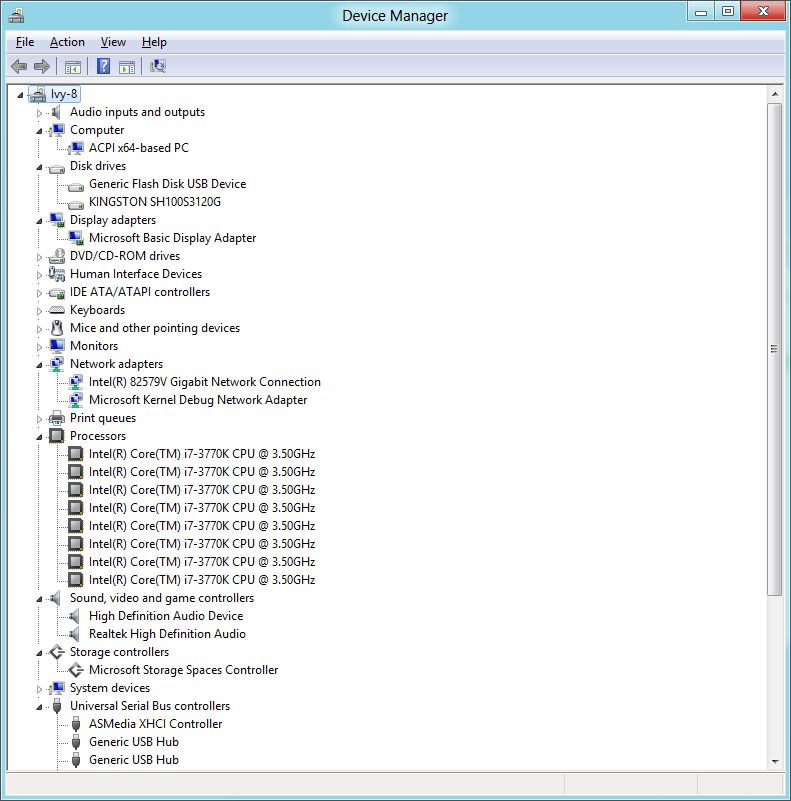
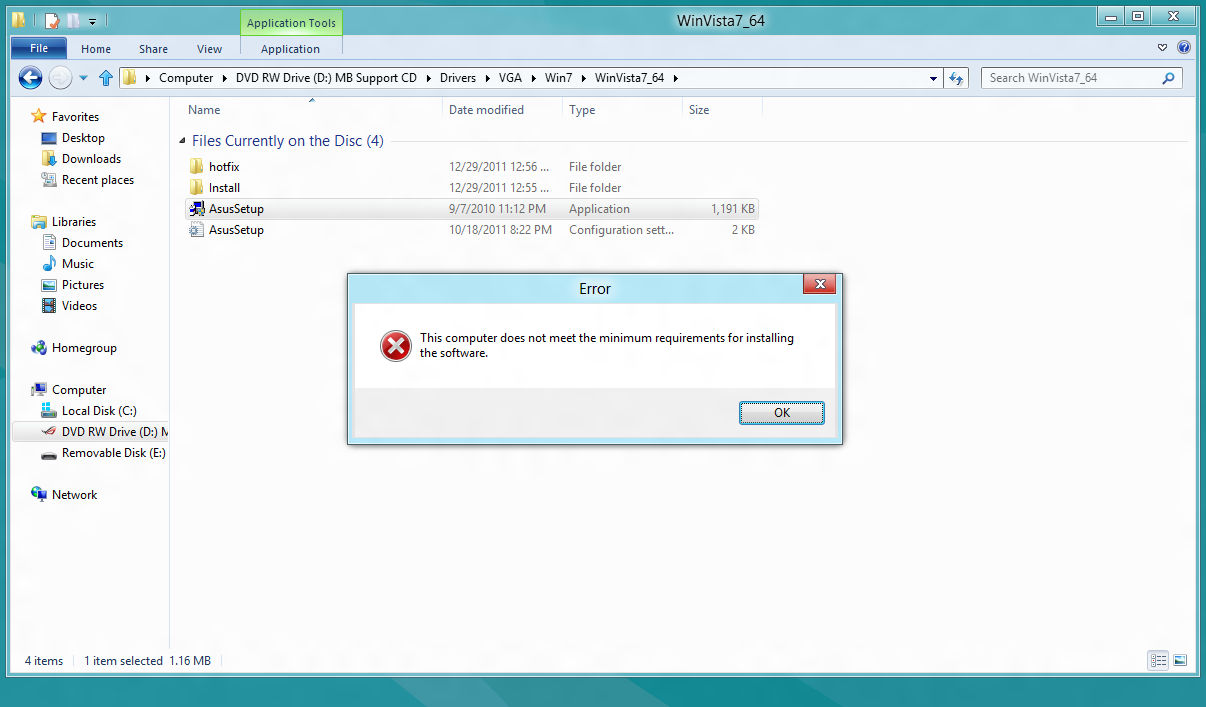
Performance testing overview
Our testing is a little different than most. We combine both synthetic and real-world applications to simulate the types of performance common to the individual products. For motherboards this means that we run roughly six synthetic tests and two real-world. We will be expanding the real-world testing in the near future. But there is more to performance than just the raw numbers. As there are multiple components and sub-components on a motherboard there each item can have a distinct impact on the way the product will perform once you get it in your system. It is important to note not only the actual results but what they mean to you as a potential consumer. We will try to give this information to you.
But we do not just cover the performance aspects that are measurable. We also talk about the components that might not have a direct benchmark. These are items like Audio Quality, ease of use and installation.
Section 1 Subsystems
Memory -
Memory performance is very important on a motherboard, especially when you have a CPU with multiple cores and threads. If you have slow memory your cores and threads can become starved for data to execute. To test memory performance we run both Sisoft’s SANDRA and AIDA64. These two combine to not only give us accurate numbers but to validate each other. For testing at stock speeds the memory is hard set to 1333MHz while overclocking testing is done at the highest stable speed for the voltage of 1.65v this is due to the different memory dividers for each CPU. As such, the memory speeds will vary greatly. This means that the overclocked numbers are a little misleading and while they can show a trend are really only included to show if a board has a problem with memory performance at high clockspeeds.
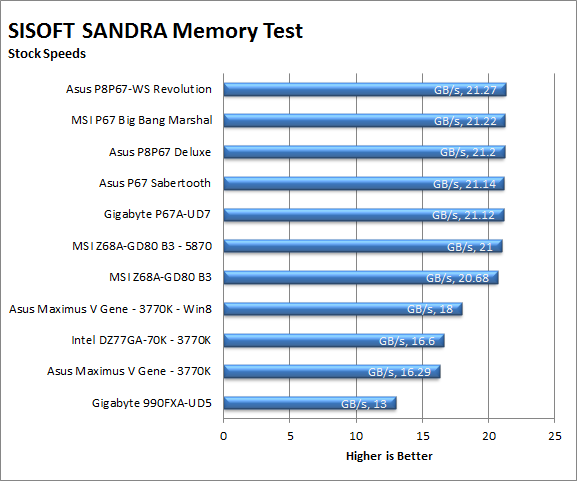
Interstingly we saw higher memory speeds under Windows 8 than we saw with Windows 7 on the Maximus V Gene. Of course it took us a while to get Sisoft’s Sandra running under Windows 8, but in the end it does look like you might get a little bit better memory efficiency out of it (remember this is still a beta).
Drive performance -
Drive performance is also one of the major subsystems that goes to make up the performance of a motherboard. For our testing we use Sandra and AIDA64 again. We only test with single drives for each type of controller present on the motherboard (unless it is a professional product where we will use RIAD 5 and/or 10). We have also begun using a Seagate PS-110 USB 3 external HDD and a Kingston HyperX USB 3.0 Flash drive for our USB 3.0 performance. As a side note, we include the overclocked numbers here to make sure (again) that you are not going to see a major drop in performance due to minor instabilities at high clock speeds.
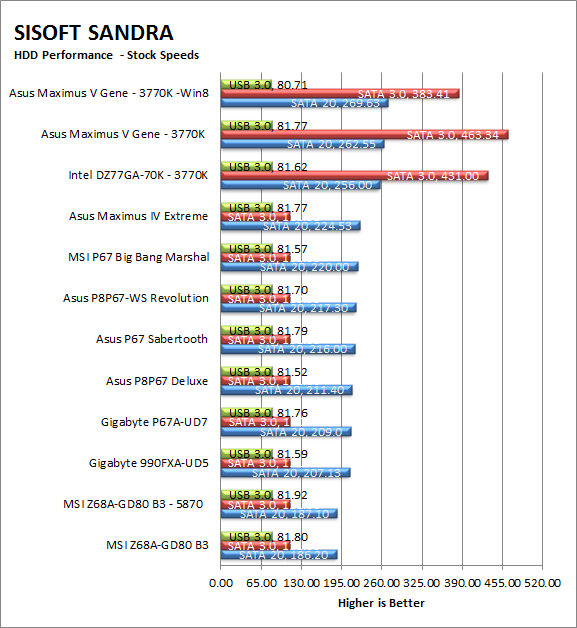
The drive performance was good for SATA 2 but nowhere near as good as it should have been for SATA 3.0. This comes back to an issue with drivers. Right now the only available drivers are for Windows 7. Windows 8 has a slightly different driver model so while many Windows 7 drivers will work, they are not going to perform as well as they would on Windows 7.
We even had an issue where the ASMedia USB controller would continue to state that our USB 3.0 flash drive would work better is plugged into a USB 3.0 controller. But then would identify itself as a USB 3.0 controller… Clearly we have a ways to go with drivers.
Power -
Power efficiency is another of those misnomers that we get caught up in. We hear about idle states and power gates. But what does that mean to you and I? On the surface having power management that reduces idle power sounds great and can be a benefit to someone that leaves their system on for long periods of time (and inactive) but how a system handles power under load and the delta between the two states is often more important than the idle power usage numbers. We use only P3 Kill A Watt instruments for measuring power.
There was no difference in the amount of power draw at idle or under load. This was not unexpected, but we did hope there might be a slight difference.
Cooling (Board Level) -
Board level cooling is an important factor in product performance and longevity. Components like the chipset, VRM modules and even capacitors need to be kept relatively cool to prevent failure. As these parts are made of silicon, they have a thermal breakdown threshold; or melting point. At that temperature the actual transistors built into chip will begin to deform and break down. Granted, the threshold is often very high, but you still need to make sure that components stay away from this level of heat for longer product life.
Cooling was the same way, although we detected a slight difference they were well within typical variations on the Maximus V Gene.
Audio -
Audio is highly subjective. What we find pleasing may sound “off” to you. That is always going to the problem with testing audio; results will vary too widely depending on the tastes of the listener. However, there are ways of measuring the audio output with an objective ear. There is also the issue of audio causing performance issues in gaming and video playback. The reason this is a potential source of concern is that all onboard audio CODECs (Compression/Decompression) are CPU controlled. This means that while the audio chip controls the audio levels and effects of the audio the actual work is done on the CPU. Usually this will not be a problem with today’s powerful CPUs. Even the lower and consumer level products can handle high-end audio these days. But again there is the chance that a bad design or software will hinder your system and performance. On the other side the limits of board space, cost, etc will also prevent the level of audio quality you can get from an add-in board. We test all audio parts with three media types, Movie (DVD), MP3 Music, and Gaming. These are pushed to our Tec On model 55 Tube Amp to see if we can detect any signal issues in the reproduction. The audio was acceptable and Windows 8 even installed the right driver (unlike the basic video driver we could not replace). The problem came when we tried to use any of the creative or THX applications. These either simply failed to load, or they crashed very messily.
Networking -
This one is something that is a requirement anymore. If you have a computer, the chances are good (like 99%) that you are also connected to high-speed internet. With this you need a good and solid LAN chip to make sure that your data flows properly out and back.
No issues here in fact the networking felt like it was a touch faster although in actual tests is was about the same as under Windows 7.
Section II - Performance Tests, Synthetic
In this section of testing we cover the synthetics. These are tests that run a scripted sequence of internal APIs or that use another installed application to perform a series of scripted events. They are great in that they can provide reproducible results across various platforms. On the down side, synthetic tests can be fooled with driver tweaks and optimizations. In some cases it is necessary to rename the .exe file to something generic to discover if this is the case. In any event when this is needed (when a test shows a drastic difference in performance over the renamed exe) we will note this and show both results for comparison.
PCMark7 -
PCMark7 is the latest general performance test from FutureMark. As each generation of this benchmark has evolved and developed we have watched them add more and more realistic tests to this suite. With this generation we find more media tests, (audio and video transcoding) moving of large files, multiple web page rendering, and much more (the even added DX10 gaming). We use the Overall Performance and Common Usage suites in our testing.
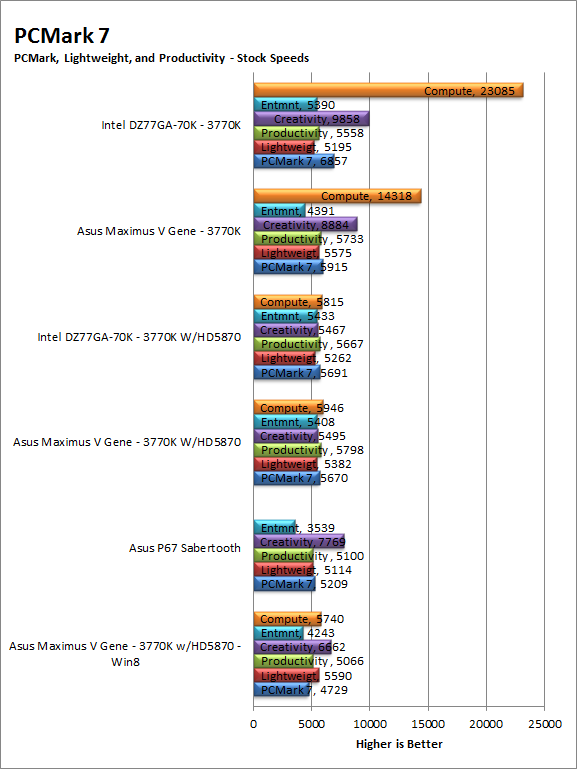
PCMark7 almost got tossed into the “won’t work” pile as it would first not install and then it would not run, but would lock the system up. The installation was fixed by using compatibility mode for Windows 7 and granting admin permissions for the install. The run time issue was with the System Information tool. To get past this we had to disable it. Once that was done the test ran ok although the performance was less than stellar. This issue has direct roots in the drivers used for the Maximus V Gene. As there is no driver for the GMA4000 for Windows 8, the driver for our HD5870 has no OpenCL support , and the SATA 3 driver for the ASMedia controller is not running well we were not surprised to see the performance drop that we did here.
3DMark 11 -
3DMark 11 is the other Futuremark test that we run on our motherboards. This test simulates the typical tasks that a GPU (and system) would have to perform to provide you with a good gaming experience. It is based on the DX9, DX10 and DX11 engines but can only be installed on Windows Vista or later. The suite of tests covers DX9, DX10, and of course DX11 rendering; it also covers AI computations and physics. That’s right I said Physics the latest version of 3DMark uses a Havok physics engine. This removes the advantage that nVidia had with 3DMark Vantage.

Here we had the same problems as with PCMark7; System Information had to go. Once that was done we saw a very low score once again this is all drivers so we really hope that we start seeing them soon. At this stage of the game there were already many drivers available for both the 32 and 64 bit versions of Windows 7…
HyperPi 0.99b
HyperPi is a front end application that allows you to easily run multiple instances of the SuperPi application. SuperPi, for those that are not familiar with it, is an application that measures the time it takes to calculate the number Pi out to as many as 32 million places. This calculation is then checked and run multiple times (up to 24 for a 32M run). This test stresses the CPU, Memory and HDD as data is handed off between the three. If there is a weak link, HyperPi will show it. For our testing we run the 32M test on as many cores (and threads) as the CPU has available. The slowest CPU time is then recorded.

Once again we see slower times and again they can be directly attributed to driver issues with the ASMedia SATA 3 controller under Windows 8 (in Windows 7 this driver is great).
Cinebench R11.5 -
Cinebench R11.5 is the 11th release of Maxon’s rendering test. This test is based off of the Cinema 4D engine, which is one of the industry standard tools for digital animation. It is a powerful product with many different modules that can be “plugged” into it to increase its effectiveness. With Cinebench you get to see how your computer would do using this application. There are two tests; one tests the CPU’s ability to render an image across multiple cores or threads. The other tests your systems ability to handle OpenGL based rendering.
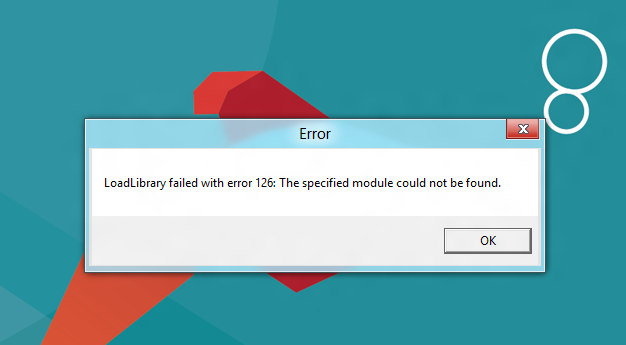
This benchmark would not even load. No matter what we tried we would just get a missing module error. At the time of this writing we were not able to find a solution. We will continue to search for one though.
Section III - Performance Tests, Real-World
Here we have two tests that are designed to put the performance of the motherboard and its subsystems to the test. Both require good CPU, Memory, HDD and even to a lesser extent audio and network performance. The two tests we chose were Lightwave 3D 9.6 and AutoGK 2.55. We will be adding at least one more real-world test to this battery in the near future, but for now these two cover quite a bit.
Lightwave 3D 9.6 x64
Lightwave is another industry standard application for 3D animation and rendering. It has a large tool base and the rendering engine is highly threaded (when using the right render model). This application is also capable of expanding to 4k resolutions as well as ray tracing for rending the light sources. For our testing we use frame 470 of the Pinball scene found in the LW 9 Content folder. This uses the newer perspective camera that is better suited to a multi-CPU/Core environment. This camera style also uses ray tracing and a much improved anti-aliasing method. Settings are shown below in the attached screen shot. Of course these are single frame renders and they are not a complete picture; for that you have to take into account the number of frames an average project would have. In a typical 30 second commercial you will have around 840 to 960 frames (at 28 – 32 FPS) this means that you have to multiply the time of a single frame by that number just to get a vague idea of how long that 30 seconds would take. This is because each frame will have a different render time based on complexity.
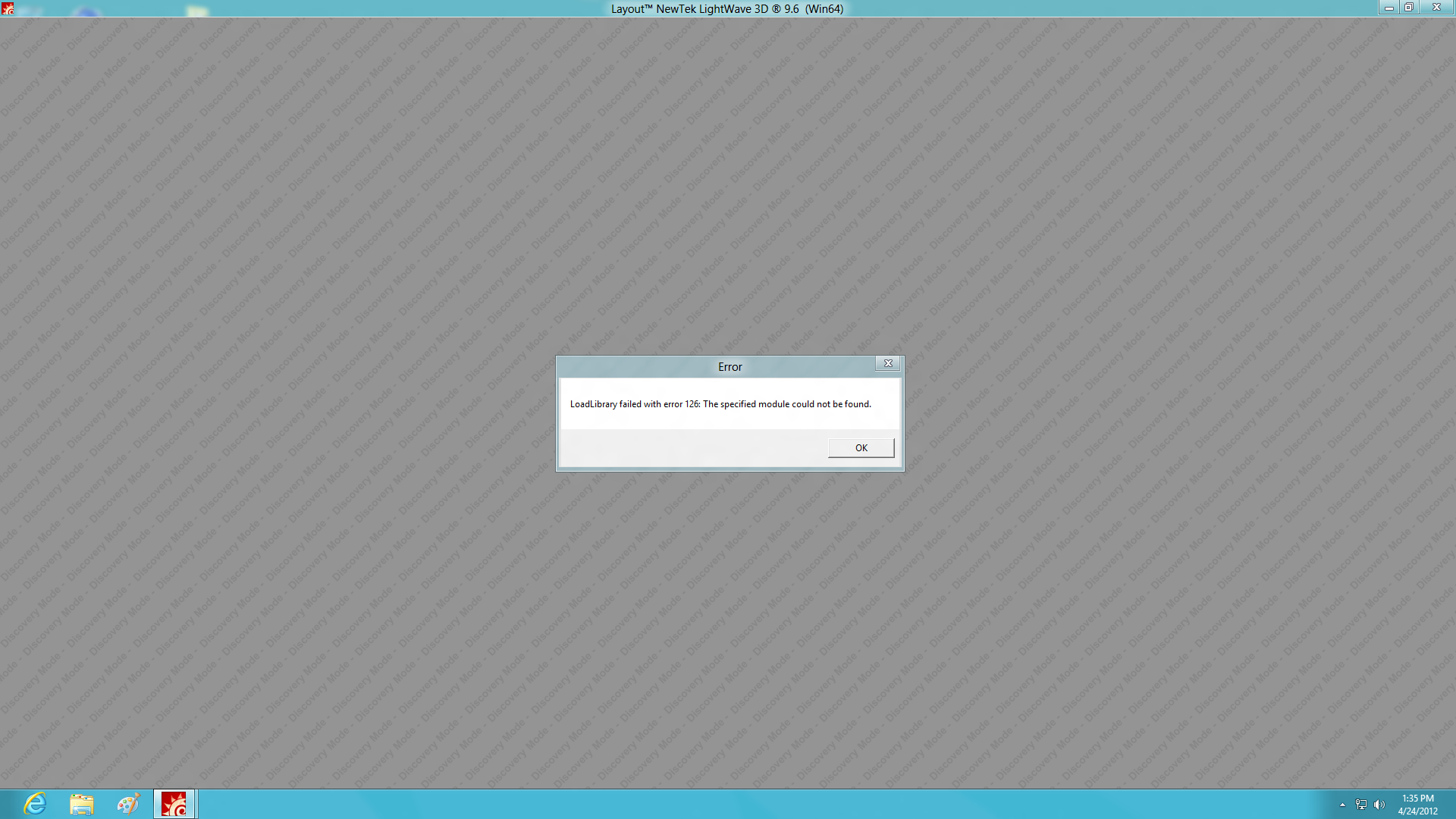
As with Cinebench there is something that is just not present in Windows 8 that prevents our rendering tests from working.
CyberLink Media Espresso 6.5 -
After having various issues with AutoGK and Intel CPUs with more than four cores we have changed our Media Encoding test to use Media Espresso from CyberLink. Although this new utility does not have the same ability to transfer directly from DVD it is still a good test to transfer different media types into a usable format for your iPad, iPod, or other media player. Our test involves using multiple (Six) 20 minute media files and transcoding them for an iPad. This gives us a very good indication of how well a motherboard can handle this type of work load.
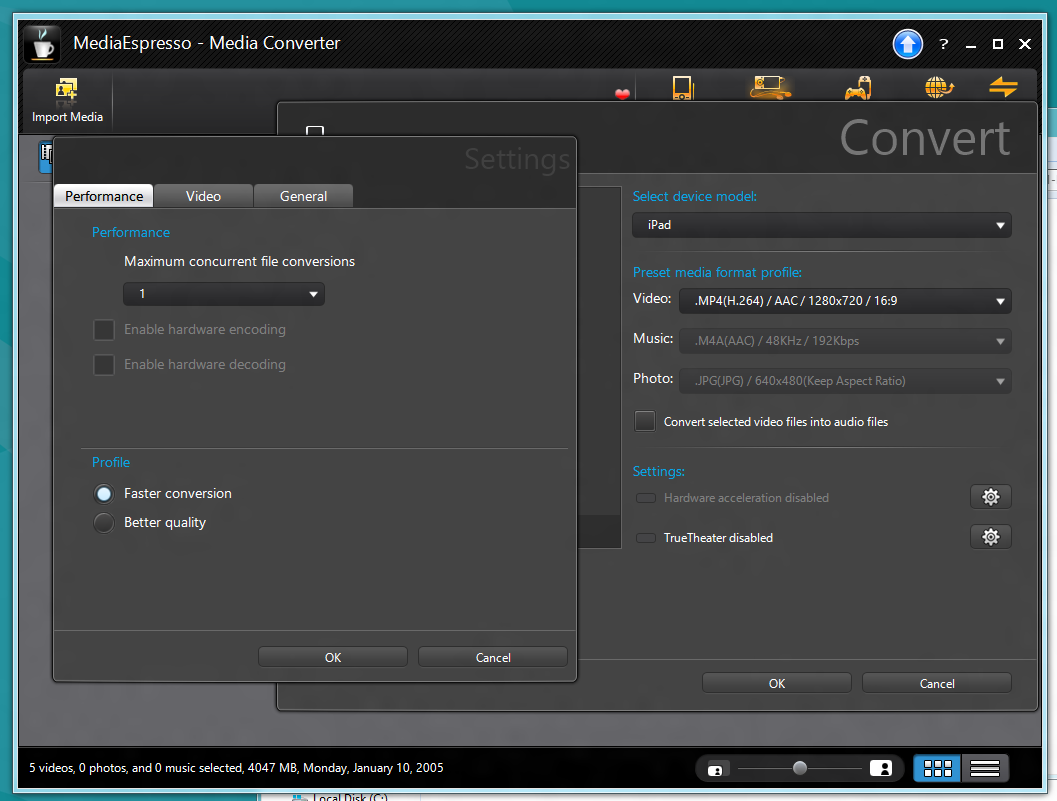
This one was interesting as we were not about to get Media Espresso running with the HD5870 in the system at all. It would run with the GPU on the Core i7 3770K, but as the driver for the GPU would not load you are not getting any hardware acceleration from Intel’s QuickSync.
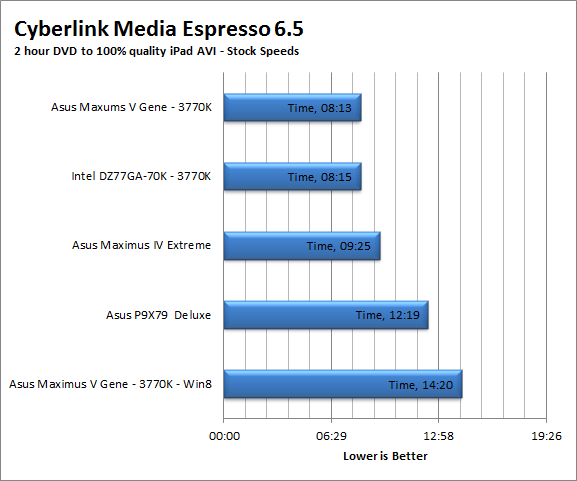
Section IV Performance – Gaming
Gaming as a test of motherboard performance is sort of a joke these days. The big player in the gaming arena is the GPU. Everyone but a few hardcore PR teams know this. However, it is important to run at least a few (one from each current DX version) to see if there are any issues with the combination of components on a motherboard. These are items like Audio lag, memory lag and of course problems with the PCIe lanes and signal traces. If there are issues in design, drivers or BIOS then you can have odd gaming performance. So without much more preamble let’s dive into the three games we currently use; Call of Duty Modern Warfare 2 for DX9 FarCry 2 for DX10 and Battlefield Bad Company 2 for DX11.
Call of Duty Modern Warfare 3 DX9 -
As the third installment in the Modern Warfare franchise you are picking up some old roles while adding a couple of new ones as well. The game play is almost identical to what you are used to in Modern Warfare 2 as are the graphical settings. The AI is a little different thought it is still similar to the bar fight style AI we like in the Call of Duty series. For our testing we run the first mission (Black Tuesday) from start to finish. Settings are shown below
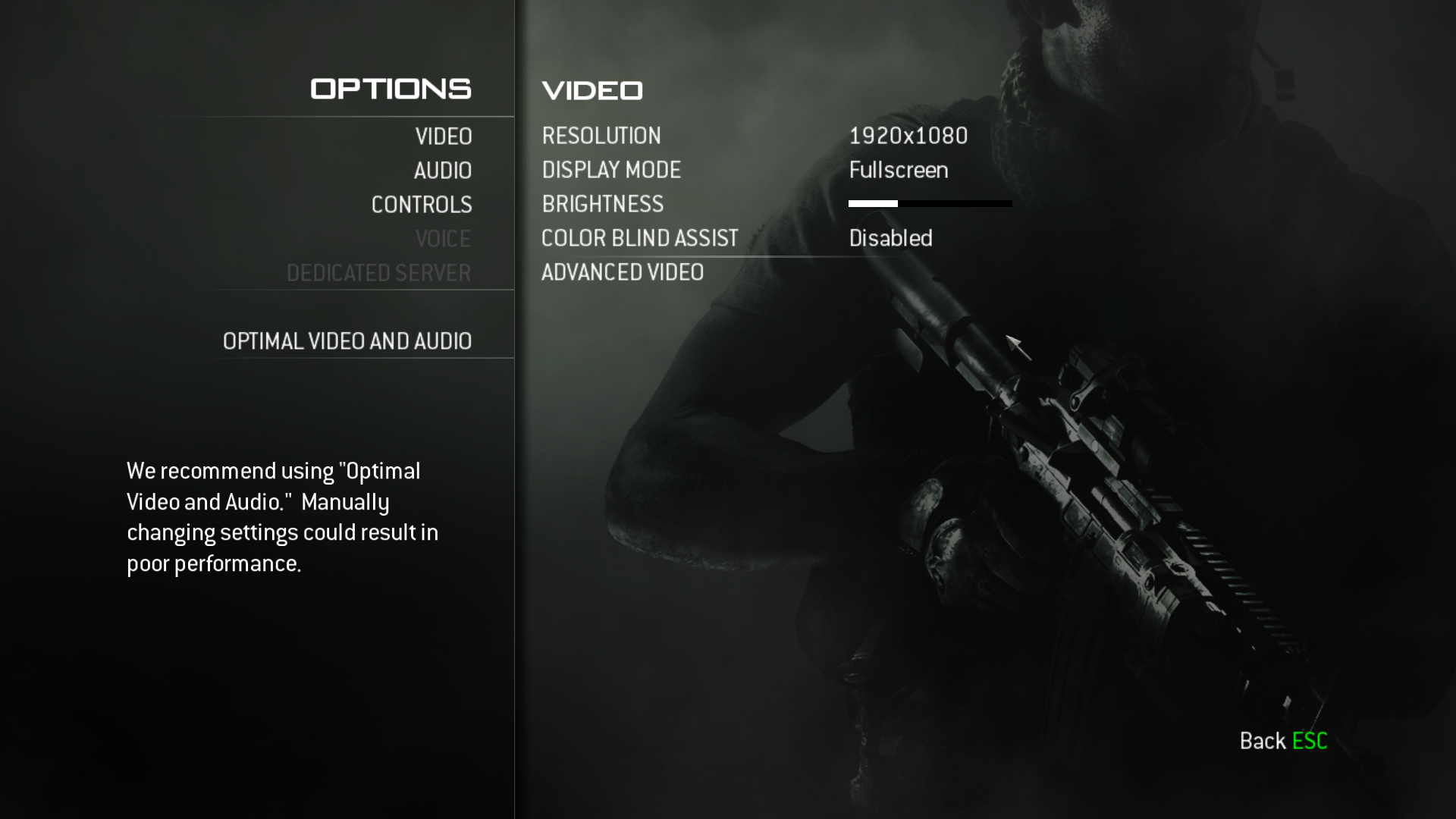 |
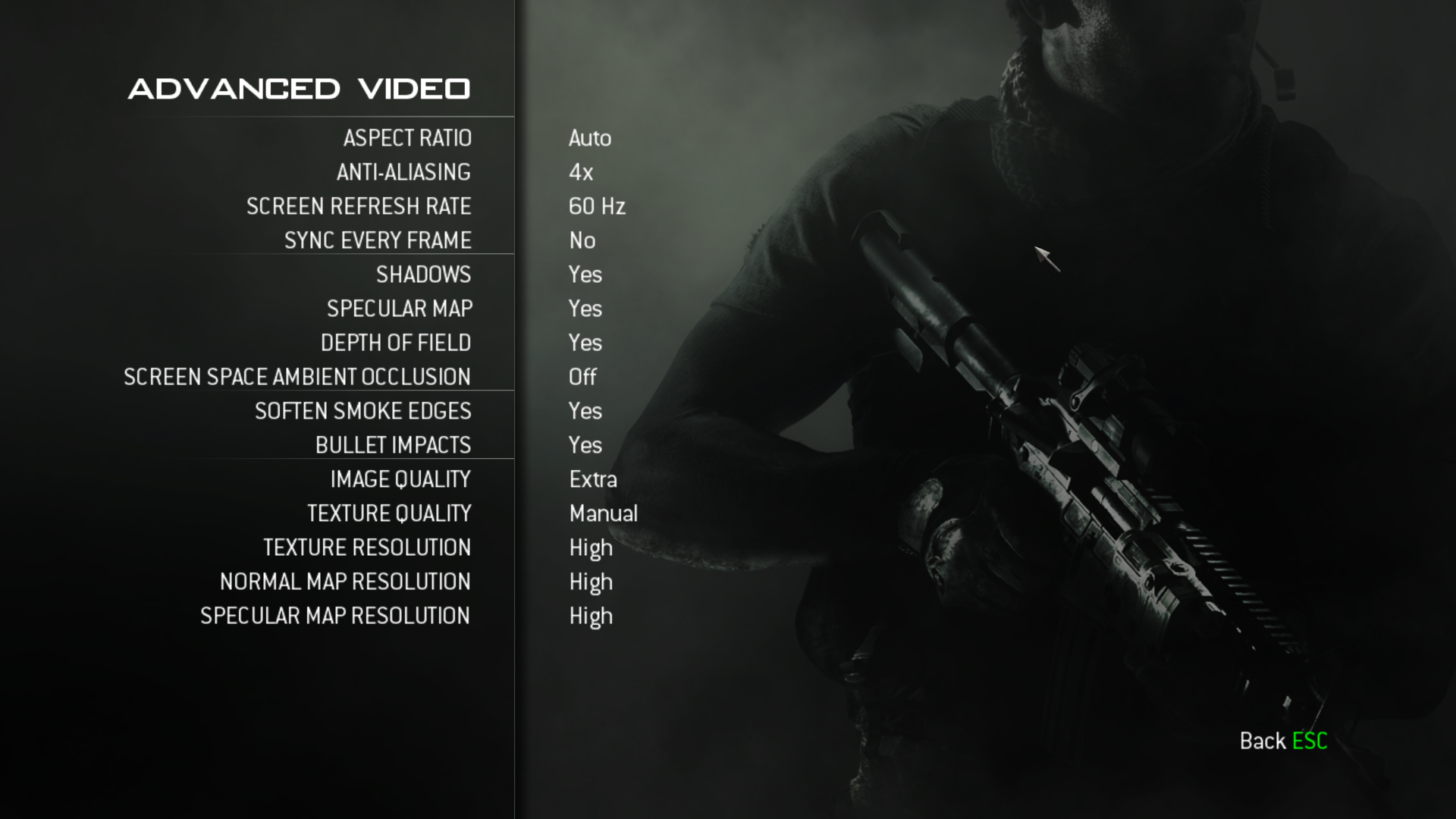 |
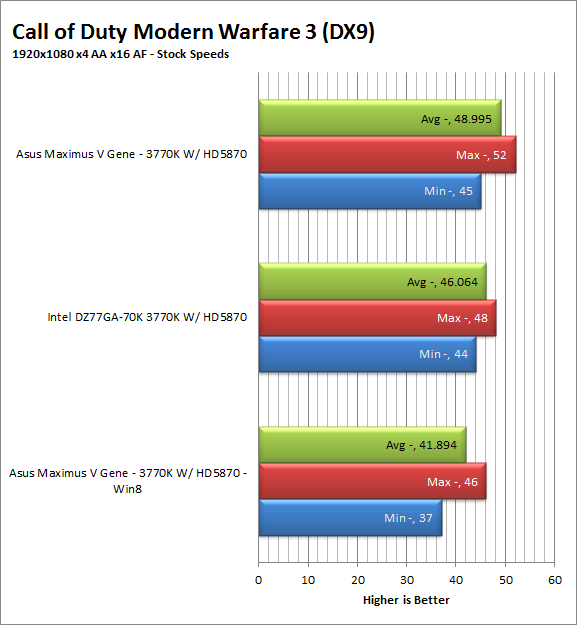
The gaming performance here with the HD5870 was not all that bad although we really did expect more here.
FarCry2 DX10 -
Although not one of my favorite games this tedious game does have some good graphics. The large sandbox style of the game lends to mission based play. The only problem is that the AI is rather low grade. Still the more CPU power the more the bad guys try to do. Over all the game was a little bit of a disappointment to play, but still not a bad DX10 representation. Our testing run starts right after you get your first mission to clean out the safe-house and ends after the hostage rescue. Settings and performance numbers are shown below.

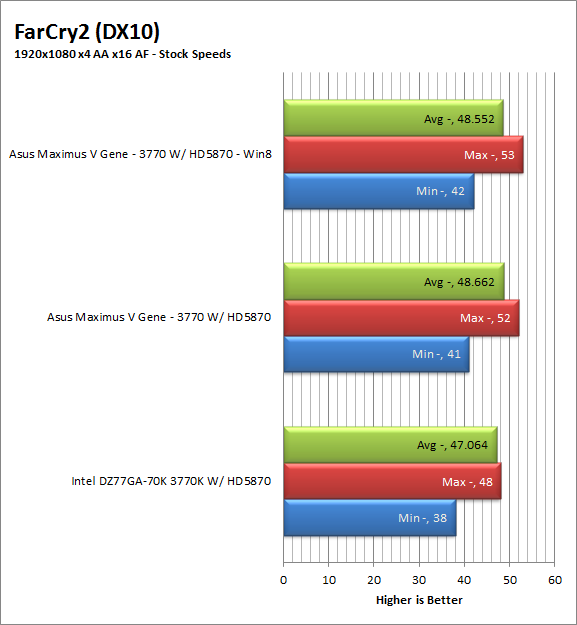
FarCry2 was better. Game play was comparable to what we saw on the
Crysis 2 DX11 –
Another sequel Crysis 2 follows up on two other Crysis games (making the title a little misleading). You take the role of a Force Recon Marine who is given a battle suit by a character named Profit (you will remember him from the other two Crysis games). From there you run around an Infected and Invaded New York City trying to survive and, of course, save the planet. For our testing we ran through the first “mission”. Settings are shown below.
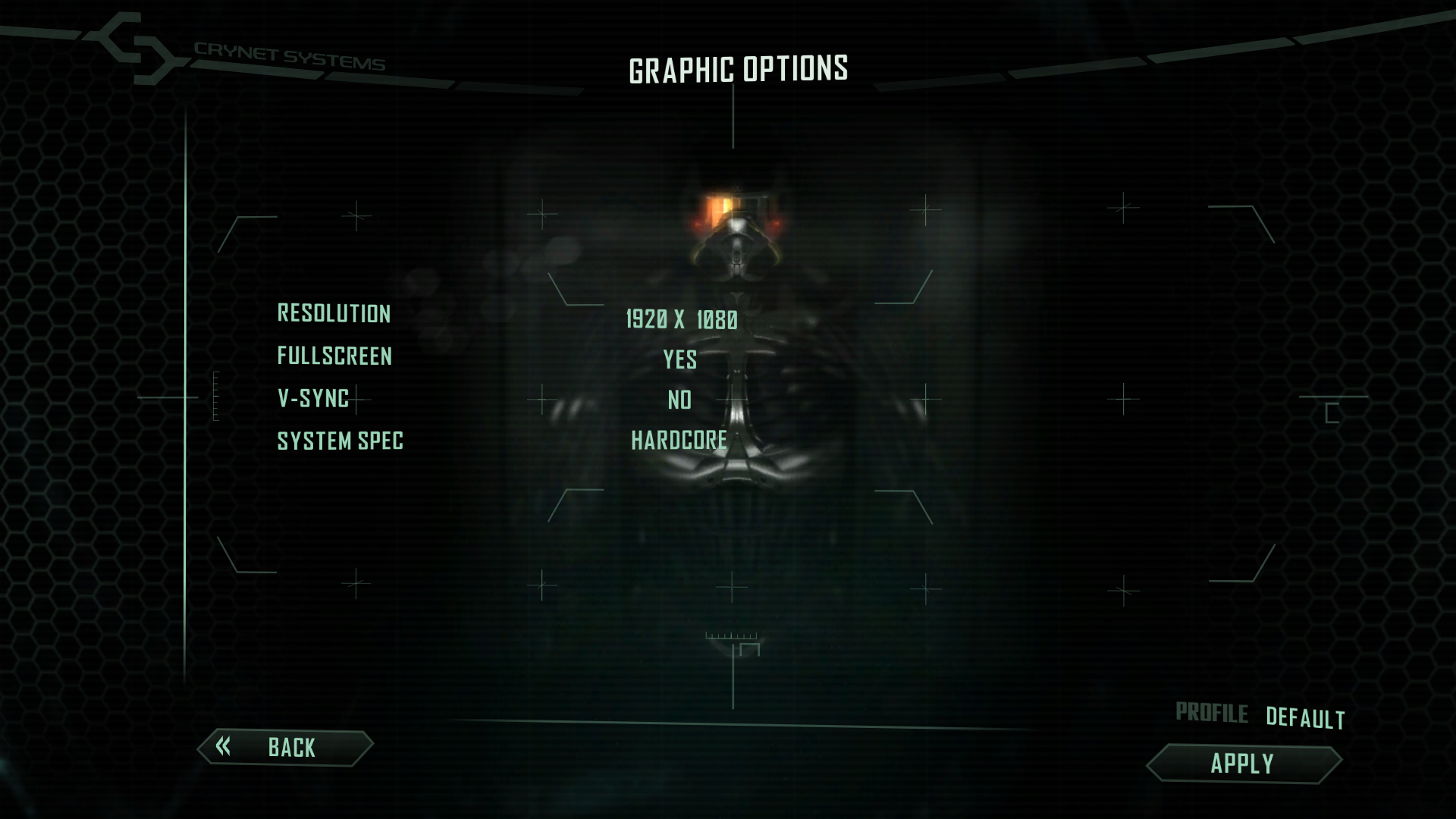
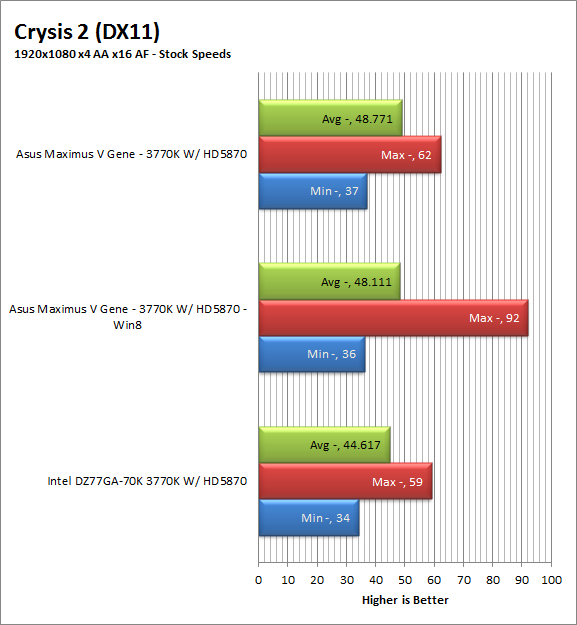
Crysis 2 was also within what we would expect from a Windows 7 gaming system, but then again DX11 is the native format for Windows 8.
Gaming wrap-up -
With gaming we had an odd issue, unless we ran the games as administrator the games would not launch. Instead they would error out with a write failure error. While this shows off the increased security in Windows 8 it is going to be a problem for many “legacy” games that need to write files to a temp directory to operate (which is most of them). Still gaming was not too bad. We did expect more, but with the stated of drivers and Windows 8 this is not a tragedy.
Conclusion -
Microsoft is releasing a full preview for Windows 8 in June. As of this writing that is about a month away. We are seriously hoping that both Microsoft and the manufacturers out there get things together so that existing hardware will work with this preview. If things are not working right (especially a brand new CPU and chipset) it could certainly turn away many enthusiasts and gamers that might be looking at this operating system. We will be bringing you more information as well as any game/ applications fixes and workarounds that we find in the coming months. You can check out the short video we shot showing you some if the issues we ran into below.
Discuss this in our Forum

 You knew we were going to do this eventually (after all we told you we would) so here we go with a complete review (performance numbers) of the Asus Maixmus V Gene with our Core i7 3770K running the same group of tests we do normally, but this time using the Consumer Preview of Windows 8 for our operating system. So now we will get to see if there is any benefit to getting Windows 8 running Intel’s latest CPU. Read on to see how Microsoft’s next OS runs on Intel’s newest platform.
You knew we were going to do this eventually (after all we told you we would) so here we go with a complete review (performance numbers) of the Asus Maixmus V Gene with our Core i7 3770K running the same group of tests we do normally, but this time using the Consumer Preview of Windows 8 for our operating system. So now we will get to see if there is any benefit to getting Windows 8 running Intel’s latest CPU. Read on to see how Microsoft’s next OS runs on Intel’s newest platform.

